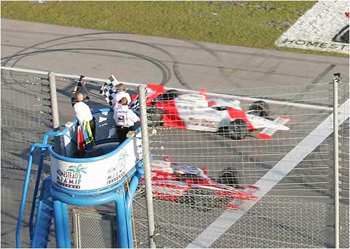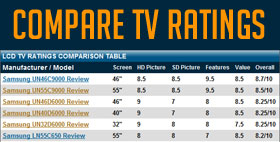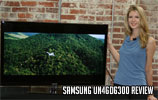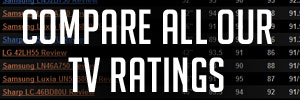LCD TV Response Time: Why it's Important
| What is 120Hz? Practical Applications LCD TV Response Time |
By: Jack Burden
One of the specifications you'll see (or will not see) when researching a new LCD TV flat screen purchase is response time. This important spec represents the amount of time it takes for one pixel to go from active (black) to inactive (white) and back to black again. Think of it in relation to shutter speed on a camera. It's the speed at which an LCD panels crystals twist" to block and allow light to pass. It is measured in milliseconds (ms) with a lower number meaning faster change between active and inactive pixels and resulting in less image artifacts. The lower the response time the better.
Many current and older LCD TVs with longer response times display a smear or blur around fast moving objects making them unacceptable for action scenes, sports, video game and just about any fast moving video. For example, when watching a baseball game on an older LCD TV the ball could appear to have a comet like tail when moving quickly across the screen. This distracting lag time in response in LCD televisions and displays has been called among other names: motion lag, trailer effect, fast motion blur, smearing. It is something more often found in budget priced and smalled LCDs but motion blur is a problem inherent in LCD technologies. The reason this smearing effect is important to you as a consumer is that a high response time (slow conversion) can completely ruin an otherwise good looking picture, no matter what the contrast and luminance of the television.

14 Miliseconds can be seen by the naked eye, these two race cars are 14 miliseconds apart.
Manufacturers of LCD TV are keenly aware of this weakness in response time compared to other technologies such as Plasma, or DLP (LED TV is being touted as a new technology but since it is based on an LCD panel with LED backlighting response time is still a factor). As a result, the best of the manufacturers have improved response rate times considerably – nearly to the point of non-consideration. Some lower tier manufacturers are finding more creative ways to measure response time in order to be or stay competitive. Originally, LCD TVs and monitors were listed with TrTf (Time Rising, Time Falling – sometimes referred to as average). Now, many manufacturers are using a GTG (Gray to Gray) measurement, which is a different average and can measure quite a bit lower than the TrTf time on the same set. Some manufacturers even find it acceptable enough to list just one half of the TrTf time. The problem is there is no industry standard for measurement in response time. There are only liberal interpretations already in use for luminance and contrast ratio.
Response rate time is currently an in vogue specification for marketing LCD TVs as manufacturers battle the perception of this weakness in LCD panels. The latest response to this issue is raising the Hz rate of the LCD panels, many LCD panels are now doubling or quadrupling the original standard of 60Hz up to 120Hz and 240Hz. Learn more about these higher refresh rate LCDs here. But as manufacturers increasingly compete based on specifications, the specs are less and less reliable. Factories are becoming more adept at rigging the specification measurement so that they can undercut the competitions product costs. Or else they just don't show a response time measurement at all. This was the case with viewing angles, then brightness and contrast and now response time is the current "0-60" measurement for an LCD flat screen. In my opinion, a consumer's best option is to go with a Tier 1 manufacturer who traditionally are much more trustworthy about specification integrity. Another problem with the specification is that some manufacturers seem to eager to throw out a response time number, while others are reluctant to publish this information due to either 1) poor response times in their LCDs, or 2) good response times but hesitation at putting the number forth just to have a myriad of less reputable manufacturers imitate it. One example of true response times is Sharp's most recent line of Aquos LCD television product. These are very highly rated LCDs and with a response time spec listed at 4 milliseconds. The older LCD TVs had a listed time of 12 to 16 milliseconds (when you could find the spec). Sony's current LCD XBR and Bravia lines have listed response times of 4 milliseconds and 120Hz or higher processing. Some Korean and Chinese LCD manufacturers are rumored to have response times in excess of 20 or even 25 milliseconds. Does response time make a difference? You bet it does. It would be my top consideration along with viewing angle when purchasing an LCD.












